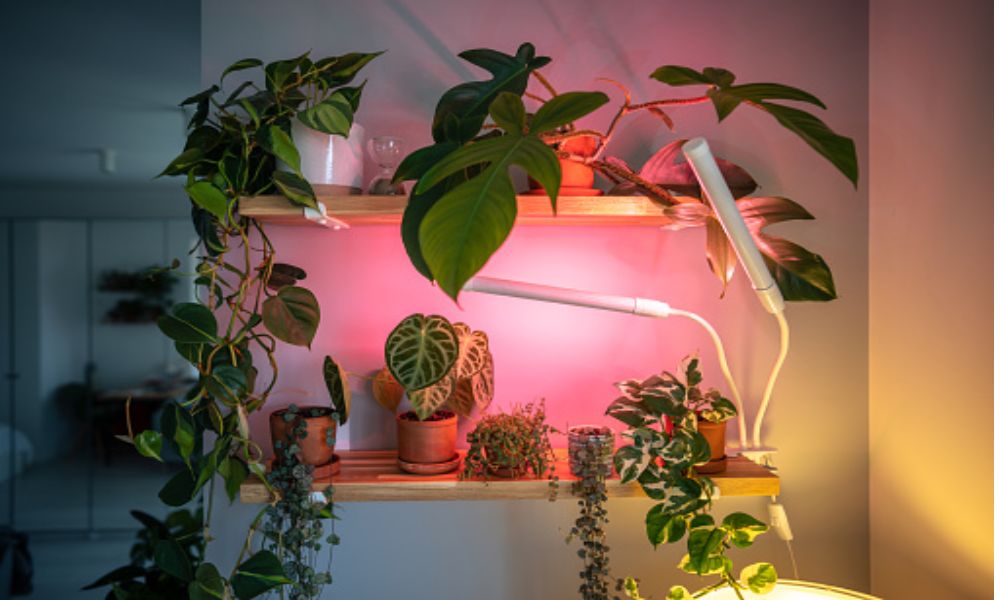I’ve used LED grow lights in my home for years—mostly to help my lemon tree, herbs, and a few stubborn succulents thrive through dark winters. But early on, I found myself wondering: Are grow lights bad for humans? The question stuck with me as I spent more time around them—reading, working, even dozing off near their glow. I dug into research, asked experts, and paid close attention to how I felt over time. In this article, I’ll share what I’ve learned: the facts, the myths, and what it’s really like living with grow lights daily. Curious if grow lights are safe or harmful? Let’s break it down together.
What Are Grow Lights and Why We Use Them
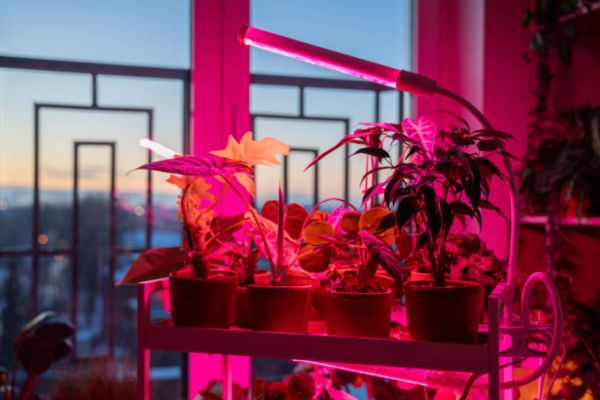
Grow lights are special lights that help plants grow indoors. They give off the kind of light plants need—like the light from the sun. These lights are a simple fix when your home doesn’t get enough sunlight. You just plug them in, and your plants get the “sun” they’ve been missing.
I started using them during one long winter. My lemon tree’s leaves were turning yellow. My herbs looked sad, and even my succulents weren’t happy. So, I tried grow lights. Within weeks, my lemon tree perked up. Now, it even grows small lemons near my kitchen window.
People use grow lights for all kinds of plants—lemon trees, herbs, succulents, vegetables. Whether you’re growing basil for your pasta or trying to save a droopy aloe, grow lights make it possible. They let us garden even when the weather outside says no.
If you’re wondering which one to buy, I’ve already tested a few. You can check out my guide to the best grow light for lemon tree to find one that works well and won’t overheat your plant.
Are LED Grow Lights Harmful to Humans?
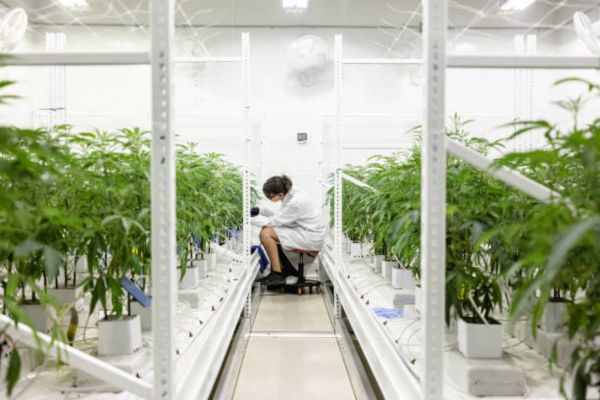
Here’s what I discovered after spending hours under them every week. Like many plant lovers, I started with older, bulky grow lights. They worked, but they gave off a ton of heat and made the room feel like summer—even in December. Then I switched to LED grow lights, and it felt like a major upgrade. They used less power, stayed cool, and helped my plants thrive. But then came the question: Are LED grow lights harmful to humans?
Unlike traditional grow lights, which often emit more UV and infrared light, LEDs can be customized to produce only the wavelengths plants need. That means less wasted energy—but more blue light, which is great for plants but can be harsh on our eyes. Think of it like staring at your phone screen for too long—same light range, same risks.
Some people worry about UV rays. The good news? Most consumer LED grow lights emit very little to no UV. You’re not tanning under them. However, staring directly into a high-powered LED light for long periods could cause discomfort. Personally, I’ve felt mild eye strain when I worked too close to mine, especially late at night. So now, I make sure to keep a safe distance—about 2 to 3 feet away—and never point the light toward where I sit or sleep.
There are studies showing that prolonged exposure to intense blue light may affect melatonin levels, which could mess with sleep patterns. That’s why I avoid using them in bedrooms or rooms where I unwind at night. In my setup, they’re on a timer—12 hours on during the day, then off overnight. Simple and safe.
Can Grow Lights Cause Cancer?
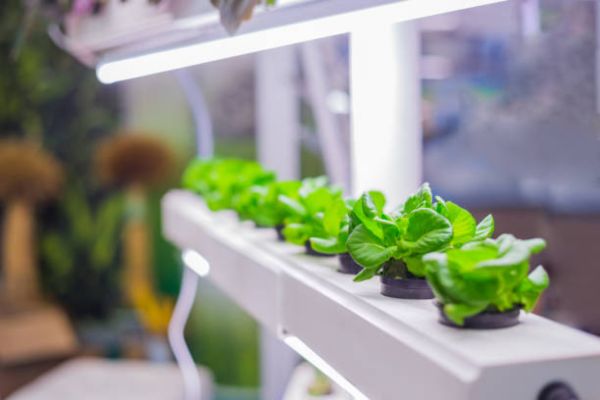
This is a question I Googled when I first bought my grow light. I had just set it up near my lemon tree and paused. Could this light be bad for me? It sounded silly—but I needed to know.
Let’s keep it simple. Cancer from light usually comes from too much UV light. That’s the stuff in sunlight or tanning beds. Some old grow lights did give off more UV, but today’s LED grow lights don’t. They use visible light—not the kind that harms your skin.
Experts and doctors say the same. You’d need a super strong light, close to your skin, for hours a day. That’s not how we use grow lights at home. I never sit right under mine. I point it at my plants and walk away.
I also set a timer. It turns off after 10–12 hours. My plants get what they need. I don’t get too much light. Simple, safe, and stress-free.
So yes, I had this worry too. But now, I know better—and you do too.
Best Practices for Safe Use of Grow Lights Indoors
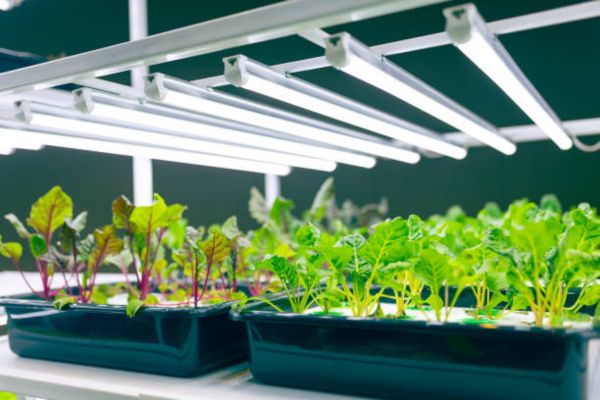
Using grow lights at home is simple—but using them safely takes a little care. Over the years, I’ve learned some easy tricks that make a big difference. Whether you’re lighting up a lemon tree or starting seeds in your closet, these tips will help you stay safe and stress-free.
First, always go for full-spectrum LED lights with low or no UV output. Most modern grow lights are safe, but it’s good to double-check the specs. Look for certifications like ETL or RoHS for added peace of mind.
Second, use a timer. I set mine to run for 10–12 hours a day—never more. This helps the plants stay on schedule and stops me from overdoing it. Plus, it saves energy.
Keep a safe distance from the light, especially in small rooms. I try to stay at least 2–3 feet away from strong lights. If your setup is in a bedroom or living space, this is even more important.
Also—don’t stare into the light. Ever. It sounds obvious, but I’ve caught myself doing it while adjusting things. Those bright LEDs can be rough on the eyes. I now angle them down and out of my line of sight.
If you grow in shared spaces, try using a grow tent or reflective box. It keeps the light focused on the plants and away from your eyes or pets. In my setup, I use a simple reflective board behind the plants, so the light doesn’t bounce around the room.
What Are the Best LED Grow Lights (for Safe and Efficient Growing)?
Choosing the right grow light can feel overwhelming. There are so many options out there—but not all of them are safe or effective. Over the years, I’ve tested quite a few, and a few clear winners stood out.
When picking a grow light, I always look for UL, ETL, FCC, or RoHS certification. These labels mean the light meets safety and quality standards. If a brand doesn’t mention any of these, I skip it.
Here are a few safe, well-reviewed grow lights I trust:
- GE BR30 LED Grow Light – Ideal for small herbs or single citrus trees. It’s energy-efficient and fits in a standard lamp.
- Spider Farmer SF-1000 – Great for bigger setups or multiple plants. It has full-spectrum light, dimming options, and stays cool.
- Viparspectra XS Series – Strong, reliable, and perfect for leafy greens or indoor veggies. ETL-certified and quiet.
For my lemon tree, I personally use the GE BR30 during the cooler months. It’s low heat, gentle on the eyes, and does the job well in my small kitchen space.
If you’re looking for a deep dive, I’ve reviewed my top picks in this guide: Best Grow Light for Meyer Lemon Tree
It includes budget-friendly options, mid-range picks, and what to avoid—based on real results, not just specs.
FAQs
Is it okay to stay in the same room with grow lights on?
Absolutely. You can be in the same room, but avoid staring at the light for long. I usually angle mine away from seating areas to reduce eye strain.
Can grow lights affect sleep patterns?
Yes, if they’re on late at night—especially high-blue light models. I keep mine off after sunset to avoid messing with melatonin or sleep cycles.
Do LED grow lights give off UV rays?
Most home-use LED grow lights produce little to no UV. The light they emit is mostly visible spectrum, which is safe when used as directed.
Is it safe to use grow lights around pets or kids?
Yes, but take precautions. Keep lights out of reach, use timers, and avoid direct exposure to eyes—just like you would with any bright light at home.
Final Thoughts
After years of using LED grow lights daily—and conducting extensive research—I can confidently say this: when used properly, grow lights are safe. Science backs it, and so does real life. I’ve used them near my workspace, in my kitchen, and around pets—with no serious issues.
Yes, they give off bright light. Yes, they can cause discomfort if misused. But with just a few smart habits—like pointing them away from where you sit or sleep—you can enjoy lush, green plants without any health stress.
Grow lights have brought joy and fresh life into my home. They’ve helped me grow herbs, flowers, and even a lemon or two during long, grey months. And knowing how to use them safely only makes the experience better.

